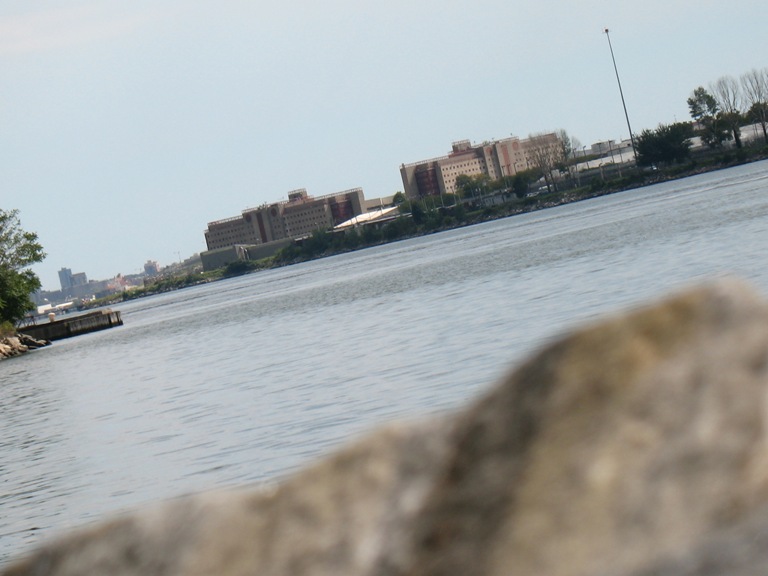‘New York City officials claim people in “alternatives to solitary” will have at least 10 hours of daily out-of-cell time, with counseling and programming. But their actual plan involves people being locked alone in a cell twenty-three hours a day, everyday, for indefinite periods of time.’

Jarrett Murphy
Rikers Island.As a psychiatrist, I have studied the use of solitary confinement for four decades. Solitary is disproportionately inflicted on Black, Latinx, and Native people, and other people of color. Solitary causes great human harm, and research indicates it actually does not reduce violence behind bars. The harm stems from the social isolation it inflicts. Human beings are social creatures who need to have meaningful human engagement to stay healthy, literally to survive.
The well-known psychological effects of solitary include severe anxiety, panic, paranoia, problems with memory and concentration that make reading and studying very difficult, despair, depression, self-mutilation, the exacerbation of mental illness, an extraordinarily high rate of suicide, heart disease, and worsened behavior. When people who have spent significant time in solitary return to outside communities, they are at a much heightened risk of substance abuse, crime, and death from all causes because of the health impacts and decimation of life skills clearly caused by solitary.
There is growing momentum across the United States to greatly restrict or eliminate solitary confinement in jails, prisons and immigration detention centers. New York State and New Jersey have both enacted laws to end long-term solitary. Voters in Allegheny County, which includes Pittsburgh, passed a referendum to end solitary in their jails. Chicago and New York City have announced an end to solitary in jail. President Joe Biden and Vice President Kamala Harris have called for an end to solitary confinement.
 CityViews are readers’ opinions, not those of City Limits. Add your voice today!
CityViews are readers’ opinions, not those of City Limits. Add your voice today!
We must beware, however, of claims of ending solitary where the harmful practice is simply replaced by new forms of solitary confinement by another name. New York City’s current plan epitomizes the problem. New York City officials claim that people in “alternatives to solitary” will have at least 10 hours of daily out-of-cell time, with counseling and programming. The problem is they are stretching any reasonable definition of “ending solitary,” “out-of-cell time,” and “programming,” while their actual plan involves people being locked alone in a cell twenty-three hours a day, everyday, for indefinite periods of time. Physical extensions of solitary cells a few feet long are to be provided, where the inhabitant will be locked alone in the tiny cage-like extension, and this they call “out-of-cell-time.” One other person may also be locked alone in a separate cell at the same time somewhere down the tier. “Programming” will be done while the inhabitant is locked alone.
Regardless of what name officials give it, this is solitary confinement. Because the social isolation is replicated, people locked alone in these cells, without meaningful human touch, interaction or programming, will continue to suffer all of the harmful and well-known consequences of solitary.
If New York City moves forward with its current plan, it will not only cause tremendous harm to individuals’ mental health and to institutional safety in the city’s jails, it will also set a very dangerous precedent for the rest of the country. If locking someone alone in an extended cell is “ending solitary confinement,” we may see similar abuses pop up all over the country.
Alternatively, given all the momentum and public support for restricting and ending solitary, there is a real opportunity to actually eliminate solitary and replace it with evidence-based alternatives that foster rehabilitation and make possible eventual successful reintegration into the community.
The New York City Council must step in to stop solitary confinement by another name, and ensure people in jail have access to full days of real out-of-cell programming and activities in group settings and spaces conducive for meaningful human interactions. Similarly, officials in New York State, New Jersey, Chicago, Pittsburgh, and elsewhere should implement their policies in a way that rejects solitary by another name and embraces truly rehabilitative programming.
The Federal Anti-Solitary Taskforce recently released a federal Blueprint for Ending Solitary Confinement. The Blueprint provides a detailed map for how the federal government can meaningfully and effectively end solitary in federal custody, while also incentivizing states to do the same. The Blueprint recommends ending solitary, other than as part of emergency de-escalation for at most four hours, and utilizing alternatives that involve at least 14 hours of actual out-of-cell time daily with at least seven hours of congregate programming and activities.
We are in a critical moment and a real inflection point. For the sake of public safety, and for our humanity and morality, I hope our local, state, and federal governments embrace the true end to solitary confinement in all its forms and by all its names.
Dr. Terry A. Kupers, is a forensic psychiatrist, Professor at the Wright Institute in Berkeley and an advisor to the Campaign to Unlock the Box. He is the author of “Prison Madness” and “Solitary: The Inside Story of Supermax Isolation and How We Can Abolish It.”
A Board of Corrections spokesperson responded to the above oped with the following statement:
“Under the new Risk Management Accountability System, no one will be alone 23 hours a day, and it is our understanding that the Board of Correction consulted research and numerous experts during its development. The City’s plan goes further than any other jail system in the United States to limit restrictions on people who have been adjudicated for committing serious, often violent offenses that harm or endanger others behind bars. It mandates more programming, eliminates the use of routine restraints, and allows people to communicate with the people next to them for a minimum of 10 hours a day. We don’t claim that it’s perfect, and we will keep refining it after the initial implementation in November.”
Author Terry A. Kupers responds:
“With all due respect, as stated in the op-ed and not disputed in the City’s response, other than one hour a day, people will be locked alone in a cell. This is not out of cell time, and it does not add up to ending solitary confinement. As with other forms of solitary confinement, the NYC DOC plan will continue to have severely damaging psychiatric consequences for people subjected to it, and will worsen, rather than improve, safety. The New York City Council must act to end solitary in a real and meaningful way.”








